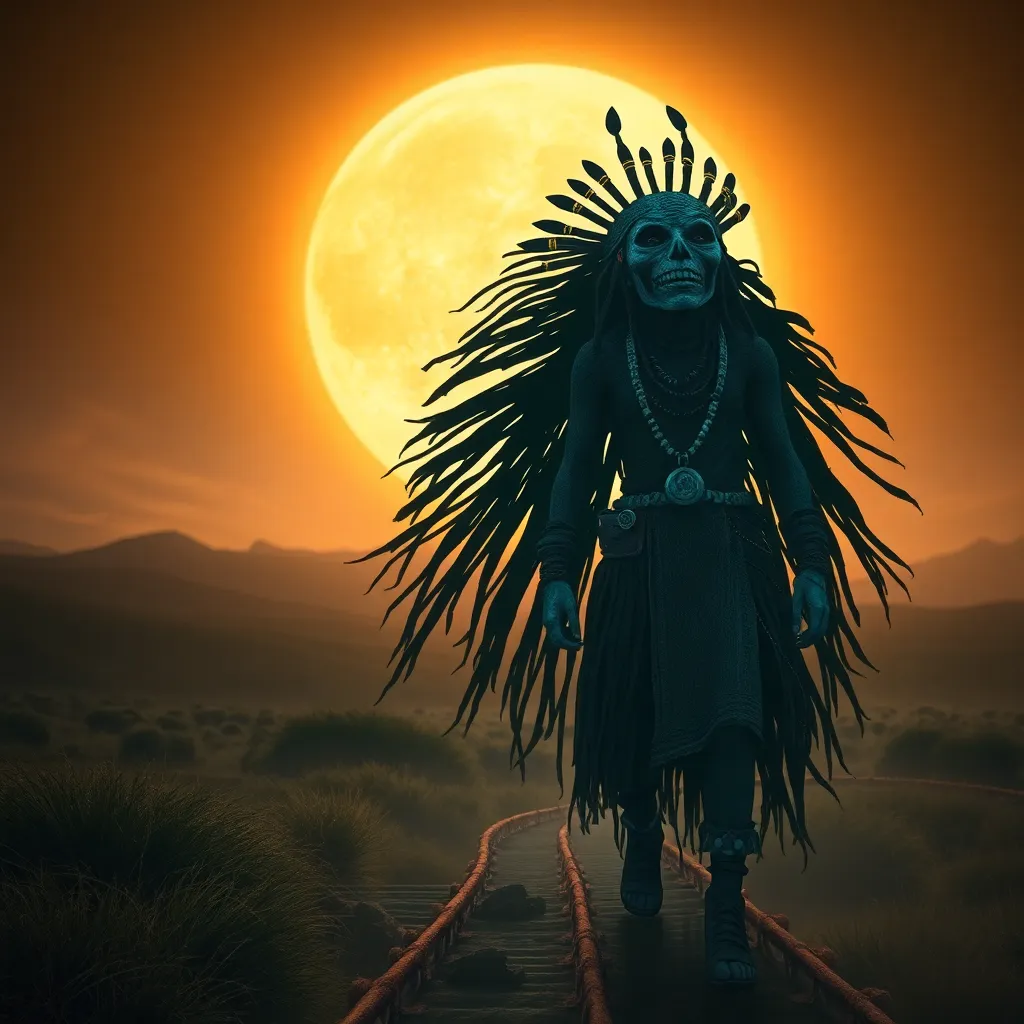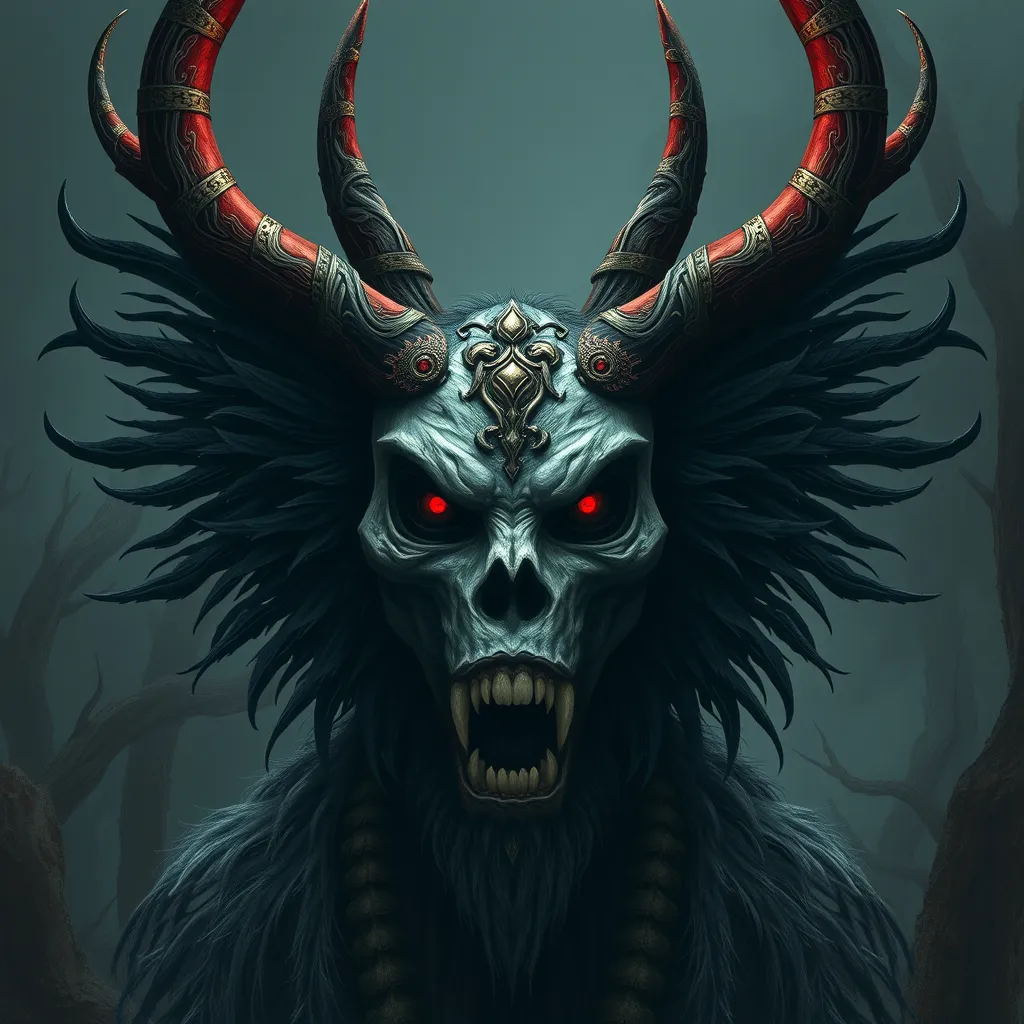Walking in the Skin of Another: Unveiling the Diné Skinwalker
I. Introduction
In Navajo culture, the concept of skinwalkers holds a significant place within the realms of spirituality and folklore. A skinwalker, or “yee naaldlooshii” in the Diné language, is traditionally understood as a malevolent witch capable of transforming into various animals. This duality of human and animal essence reflects profound themes inherent in the Diné worldview.
The importance of skinwalkers in Diné spirituality extends beyond mere superstition; they embody the complexities of morality, transformation, and the interconnectedness of all beings. This article aims to explore the historical context, cultural significance, and modern interpretations of skinwalker legends, ultimately providing a deeper understanding of their role in Diné identity.
II. Historical Context of Skinwalker Legends
The origins of skinwalker myths can be traced back to ancient Navajo traditions, where the line between the human and the supernatural was often blurred. Early stories told of individuals who had acquired the ability to shapeshift through dark practices, often as a means of gaining power or revenge.
Historical events, such as the arrival of European settlers and the subsequent colonization, shaped the narrative surrounding skinwalkers. The displacement and trauma experienced by the Navajo people contributed to a rich tapestry of legends that sought to explain their suffering and the complexities of their existence.
In pre-colonial and colonial times, skinwalkers served as cautionary tales. They were perceived as warnings against straying from traditional values and behaviors, reinforcing the importance of community and ethical conduct.
III. The Cultural Significance of Skinwalkers
Skinwalkers symbolize transformation and duality, reflecting the intricate beliefs held by the Diné people regarding the nature of existence. They embody the idea that one can traverse between realms, highlighting both the sacred and the profane.
From a moral and ethical perspective, skinwalkers challenge the community to confront their fears and desires. They serve as a reflection of the darker aspects of human nature, urging individuals to consider the consequences of their actions.
Furthermore, skinwalkers are intertwined with the concepts of community and identity. They represent the struggles faced by the Diné in maintaining their cultural integrity amidst external pressures and influences.
IV. The Anatomy of a Skinwalker Tale
A typical skinwalker story often includes several common characteristics:
- Transformations into animals such as wolves, coyotes, or birds.
- The presence of dark magic or witchcraft.
- Encounters that evoke fear or anxiety among community members.
Variations in skinwalker lore exist across different tribes, reflecting unique cultural contexts and interpretations. For instance, while the Navajo focus on the malevolent aspects of skinwalkers, other tribes may have differing views that emphasize balance and healing.
The role of storytelling in preserving these cultural narratives cannot be overstated. Oral traditions serve as vessels for passing down wisdom, ethics, and communal values, ensuring that the essence of the skinwalker myth endures through generations.
V. Modern Interpretations and Misconceptions
The impact of popular media on skinwalker myths has been significant, often leading to sensationalized portrayals that stray far from traditional narratives. Movies, television shows, and literature frequently depict skinwalkers as mere monsters or villains, overlooking their deeper cultural significance.
These misrepresentations contribute to cultural appropriation issues, where the sacred elements of Diné beliefs are commodified and stripped of their meaning. Such actions can perpetuate stereotypes and misunderstandings about Indigenous cultures.
Contemporary perspectives from Diné voices emphasize the need for respectful engagement with their narratives. Many Diné individuals advocate for a return to authentic storytelling practices that honor their heritage and educate others about the true essence of skinwalker legends.
VI. The Psychological and Social Implications
The fear and anxiety surrounding skinwalker legends are palpable within Diné communities. These tales often evoke deep-rooted concerns about safety, morality, and the integrity of the community.
Skinwalkers can also serve as metaphors for societal issues, encapsulating fears related to loss of identity, cultural erosion, and the consequences of unethical behavior. They remind individuals of the importance of maintaining harmony within themselves and their communities.
Community responses to skinwalker encounters are varied, with some individuals seeking to confront their fears through discussion and education, while others may resort to traditional healing practices or protective rituals.
VII. Engaging with Diné Perspectives
Listening to Diné elders and storytellers is crucial in understanding the true essence of skinwalker legends. These individuals are the keepers of knowledge, offering insights that are often absent from mainstream narratives.
The role of education in dispelling myths is vital. By fostering a greater understanding of Diné culture and the significance of skinwalkers, society can help alleviate misconceptions and promote respect for Indigenous traditions.
Preserving traditional knowledge through modern means, such as digital storytelling and social media, allows for a broader audience to engage with Diné perspectives. This approach not only honors the past but also empowers the next generation to carry forward their cultural legacy.
VIII. Conclusion
In summary, the significance of skinwalkers in Diné culture extends far beyond the realm of myth. They embody essential themes of transformation, morality, and community identity, reflecting the complexities of human existence.
Understanding and respecting these narratives fosters a deeper appreciation for Indigenous cultures and their resilience. As we engage with these stories, we invite a richer dialogue about the importance of cultural heritage and the need for continued exploration of Indigenous narratives.
Ultimately, the call to action lies in our willingness to listen, learn, and honor the voices of the Diné people, ensuring that their stories and wisdom endure for generations to come.




